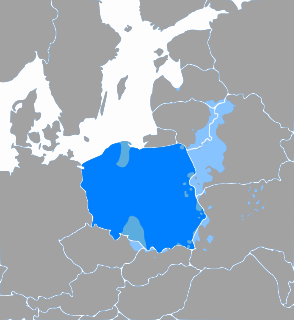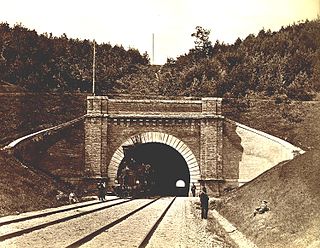
Paneriai is a neighborhood of Vilnius, situated about 10 kilometres away from the city center. It is the largest elderate in the Vilnius city municipality. It is located on low forested hills, on the Vilnius-Warsaw road. Paneriai was the site of the Ponary massacre, a mass killing of as many as 100,000 people from Vilnius and nearby towns and villages during World War II.
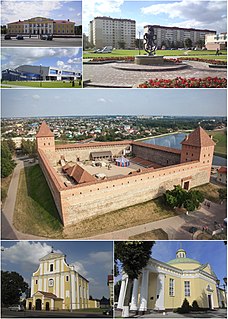
Lida is a city in western Belarus in Hrodna Voblast, situated 160 kilometres west of Minsk.

Karl Plagge was a German engineer who rescued Jews during the Holocaust in Lithuania by issuing work permits to non-essential workers. A partially disabled veteran of World War I, Plagge studied engineering, and joined the Nazi Party in 1931 in hopes of helping Germany rebuild from the economic collapse caused by the draconian terms of the Treaty of Versailles. After being dismissed from a position of lecturer for being unwilling to teach racism, and his opposition to Nazi racist policies, he stopped participating in party activities in 1935, and left the party when the war broke out.

The Fareynikte Partizaner Organizatsye was a Jewish resistance organization based in the Vilna Ghetto that organized armed resistance against the Nazis during World War II. The clandestine organisation was established by Zionist as well as Communist partisans. Their leaders were writer Abba Kovner and Yitzhak Wittenberg.

The Vilna Ghetto was a World War II Jewish ghetto established and operated by Nazi Germany in the city of Vilnius in the territory of Nazi-administered Reichskommissariat Ostland. During the approximately two years of its existence, starvation, disease, street executions, maltreatment, and deportations to concentrations and extermination camps reduced the ghetto's population from an estimated 40,000 to zero. Only several hundred people managed to survive, mostly by hiding in the forests surrounding the city, joining Soviet partisans, or sheltering with sympathetic locals.
Ypatingasis būrys or Special SD and German Security Police Squad (Lithuanian: Vokiečių Saugumo policijos ir SD ypatingasis būrys, Polish: Specjalny Oddział SD i Niemieckiej Policji Bezpieczeństwa, also colloquially strzelcy ponarscy was a Lithuanian killing squad also called the "Lithuanian equivalent of Sonderkommando", operating in the Vilnius Region. The unit, primarily composed of Lithuanian volunteers, was formed by the German occupational government and was subordinate to Einsatzkommando 9 and later to Sicherheitsdienst and Sicherheitspolizei.

During World War II, Lithuania was occupied by the Soviet Union (1940–1941), Nazi Germany (1941–1944), and the Soviet Union again in 1944. Resistance during this period took many forms. Significant parts of the resistance were formed by Polish and Soviet forces, some of which fought with Lithuanian collaborators. This article presents a summary of the organizations, persons and actions involved.

The Ponary massacre or Paneriai massacre was the mass murder of up to 100,000 people by German SD and SS and their Lithuanian collaborators, including Ypatingasis būrys killing squads, during World War II and the Holocaust in Reichskommissariat Ostland. The murders took place between July 1941 and August 1944 near the railway station at Ponary, a suburb of today's Vilnius, Lithuania. Some 70,000 Jews were murdered at Ponary, along with up to 20,000 Poles, and 8,000 Russian POWs, most of them from nearby Vilna (Vilnius), and its newly-formed Vilna Ghetto.

Ona Šimaitė was a Lithuanian librarian at Vilnius University who used her position to aid and rescue Jews in the Vilna Ghetto during World War II.
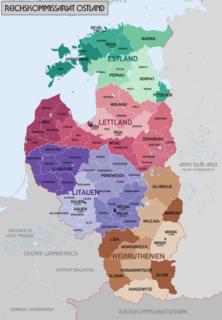
The Holocaust in German occupied Lithuania resulted in the near total destruction of Lithuanian (Litvaks) and Polish Jews, living in Generalbezirk Litauen of Reichskommissariat Ostland within the Nazi-controlled Lithuanian SSR. Out of approximately 208,000–210,000 Jews, an estimated 190,000–195,000 were murdered before the end of World War II, most between June and December 1941. More than 95% of Lithuania's Jewish population was massacred over the three-year German occupation — a more complete destruction than befell any other country affected by the Holocaust. Historians attribute this to the massive collaboration in the genocide by the non-Jewish local paramilitaries, though the reasons for this collaboration are still debated. The Holocaust resulted in the largest-ever loss of life in so short a period of time in the history of Lithuania.

Martin Weiss was a Nazi official and de facto commander of the Vilna Ghetto. He was also the commander of the notorious Nazi-sponsored Ypatingasis būrys killing squad, which was largely responsible for the Ponary massacre where approximately 100,000 people were shot.

The occupation of Lithuania by Nazi Germany lasted from the German invasion of the Soviet Union on June 22, 1941 to the end of the Battle of Memel on January 28, 1945. At first the Germans were welcomed as liberators from the repressive Soviet regime which occupied Lithuania prior to the German arrival. In hopes of re-establishing independence or regaining some autonomy, Lithuanians organized their Provisional Government. Soon the Lithuanian attitudes towards the Germans changed into passive resistance.

Jakub Wygodzki was a Polish–Lithuanian Jewish politician, Zionist activist and a medical doctor. He was one of the most prominent Jewish activists in Vilnius.
Mendel Balberyszski was a Lithuanian Jew, Polish politician and survivor of the Holocaust in Lithuania. He is chiefly known today as the biographer of the destruction of the Vilna Ghetto in his book Stronger Than Iron – The Destruction of Vilna Jewry 1941-1945: An Eyewitness Account. It is the account of life and organization in the Small Ghetto from its day of formation until its liquidation, it is also the only complete historical record of the fate of the Jewish population of Vilna from the day of the arrival of the Germans, through the two Ghettos, the concentration camps in Estonia until the liberation of the surviving 84 Jews by the Soviet Army.

The Šiauliai or Shavli Ghetto was a Jewish ghetto established in July 1941 by Nazi Germany in the city of Šiauliai in Nazi-occupied Lithuania during the Holocaust. The ghetto comprised two areas – one in the Kaukazas suburb and one on Trakai Street. Both were liquidated by July 1944, and their inhabitants were killed or transferred to Nazi concentration camps. In 1939, one quarter of the population of Šiauliai was Jewish, about 8,000 persons. By the end of World War II, only about 500 Jews of the city had survived.
Švenčionys or Svintsyan Ghetto was a Jewish ghetto in Nazi-occupied Švenčionys. It operated from July 1941 to April 1943. At its peak, the ghetto housed some 1,500 prisoners. It was located in what today is a city park; the location is marked by a wooden menorah carved by Juozapas Jakštas.
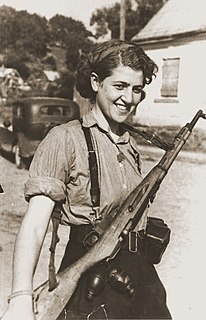
Sara Ginaite-Rubinson was a Jewish Lithuanian-born Canadian author and academic. During the Second World War she was a resistance fighter during the Nazi occupation of Lithuania, becoming a Jewish partisan in 1942.
Macha Rolnikas was a Lithuanian writer and Holocaust survivor. Rolnikas' family were Jewish and prominent in the local community, and when the Wehrmacht took control of Lithuania in 1941, her father joined the underground resistance. Rolnikas and the remainder of her family were sent to the Vilna Ghetto, and subsequently moved to Stutthof concentration camp for employment as an undertaker. As a result of her "employment", she survived in the camp until the Red Army liberated Stutthof in 1944. She was reunited in Vilnius with her older sister and father; her younger siblings and mother were most probably killed in Paneriai after the liquidation of the Vilna Ghetto. Following the end of the war, Rolnikas moved to the Soviet Union, first to study at the Maxim Gorky Literature Institute, and later to Leningrad after she was married. Her concentration camp diary was later adapted into a book, I Must Tell, that was published in the USSR in 1964 in Yiddish, Hebrew and Lithuanian, and in Paris in French in 1966.
Bruno Kittel was a Nazi official who oversaw the liquidation of the Vilna Ghetto in September 1943 and became known for his cynical cruelty. He disappeared after the war.

Kailis forced labor camp was a Nazi labor camp for Jews in Vilnius during World War II. It was based on a pre-war fur and leather factory and mostly produced winter clothing for the German military. At its peak, after the liquidation of the Vilna Ghetto in September 1943, the camp housed about 1,500 Jews. The camp was liquidated and its workers executed at Ponary on 3 July 1944, just ten days before Red Army captured the city.
![]()
